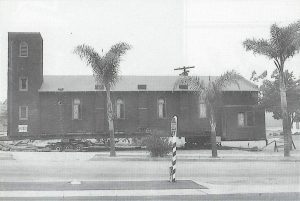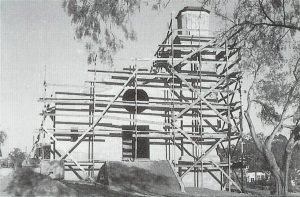IMMENSELY GRATEFUL FOR A CENTURY OF BLESSINGS was our theme for our special anniversary
HIS PAGE WILL BE ADDED ONTO UPDATED FROM TIME TO TIME SO KEEP CHECKING BACK.
Please direct suggestions, information and photos, to be added on if you have any to: webmaster@stmartinoftoursparish.org
Video of 100 years of our history Original video split into two parts. 1st Communion and academy graduates in following video.
Video of 1st Communion and Academy graduates up to 2006
Video of priests and deacons of St. Martin over the 100 years
Interviews of parishioners on parish and history
1968 Parish Directory (personal addresses and phone numbers were blurred out for privacy concerns) 60MB file
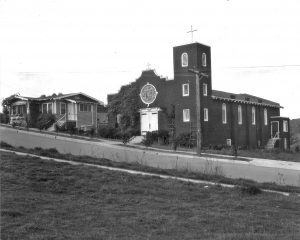
La Mesa’s early Catholic Community first gathered to worship in private homes where, on special occasions, a visiting priest would celebrate the Mass or perform marriages and baptisms. At that time, priests were concentrated in the more populous Catholic area, and understandably, a little group of fifty families in La Mesa area did not warrant the singular attention of a full-time priest. Those wishing to attend regular Mass had the option of traveling, either by train or horse and buggy, to the nearest Catholic church, located in San Diego or El Cajon.
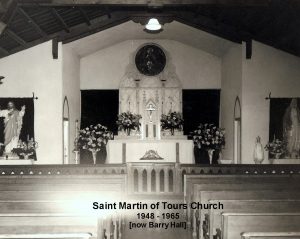

In October 1938, Reverend Thomas Lehane was appointed pastor of St. Martin of Tours. Father Lehane brought the experience and energy needed to guide the parish through the crisis of abrupt growth and expansion brought about by World War II. La Mesa, with all of California, received an overwhelming influx of war workers and servicemen and servicewomen and their families. This influx caused grave housing shortages and strained community resources to the limit. St. Martin’s parish accepted the challenge of these times and grew in numbers and activity. Extra Masses were added to accommodate the growing congregation. Catholic men and women’s groups were organized. A comprehensive catechism program was organized for the youth of the parish. The number of marriages, baptisms, confirmations, instructions and Sunday Masses surpassed all previous records. But once again, the recurring problem of not enough room, too many people, surfaced. Another move was indicated.
First, the Normal Street church was moved to our current site on El Cajon Boulevard. In a spectacular feat of “moving” engineering, the church was rolled from its former location and placed on the new site. It was then cut in two and expanded to twice the original length. To preserve the salient features of the former church, the interior structural design was left almost untouched. The exterior had to undergo extensive alterations to bring about the desired Early California Mission effect. Flying buttresses were retained and increased in number. The tower was completely redesigned to balance the enlarged nave. The church roof was given a mission tile cover and the tower was crowned by a tiled dome of soft blue and gold. The building presented a striking appearance on a commanding position over the junction of the two main boulevards of the city of La Mesa. In conjunction with the reconstruction of the church, work was rushed to prepare a new rectory on the grounds. With slight alterations, an existing building (a sanitarium) became a spacious rectory with ample accommodations for church group meetings and parish parties. This project took six months to complete. And so, once again, Christmas Mass, 1948 was celebrated in a “new” church.
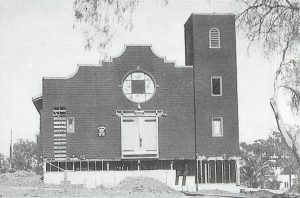
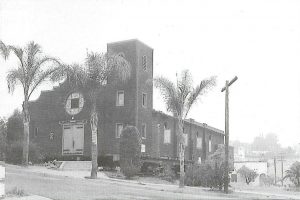
In 1950, it was obvious to all that a parish school was an absolute necessity in a growing and expanding parish. In the fall of 1950, construction was begun on St. Martin Academy, and a suitable convent for the staff of sisters who were promised to the new school by the Mother General of the School of Sisters of Notre Dame, St. Louis, Missouri. In September 1951, the doors of the Academy opened to the first classes – grades one through eight in elementary education. This was followed in later years, with the introduction of a kindergarten. In May 1952, San Diego’s first Bishop, the Most Reverend Charles F. Buddy, dedicated the school and conferred the Sacrament of Confirmation on the two senior grades.
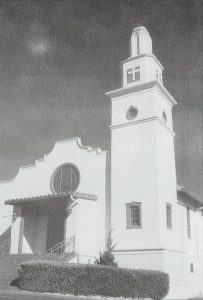
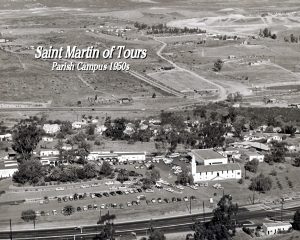
The parish social hall was completed in October 1952. It included a cafeteria to supply hot lunches for the students. In 1956, four new classrooms were constructed and the school enrollment reached 500.
La Mesa continued to expand at a rapid rate until it became apparent that the church could no longer accommodate the congregation on Sunday mornings despite the increase in the number of Masses. Consequently, a new church became an obvious necessity. In 1961 the first of many fund drives began which were to extend over a three year period. On June 28 (or 18), 1964, in the presence of a large group of parishioners, ground was broken for our current site by the pastor, Father Dennis Barry, and the ground was blessed with a full ritual of liturgy.
On April 5, 1965, construction was started by the Riha Construction Company, with architect, Arthur D. Decker, AIA, directing operations. Throughout the long spring summer and fall the building gradually took shape and in a masterly drive the work was completed in time for Christmas Mass, 1965.
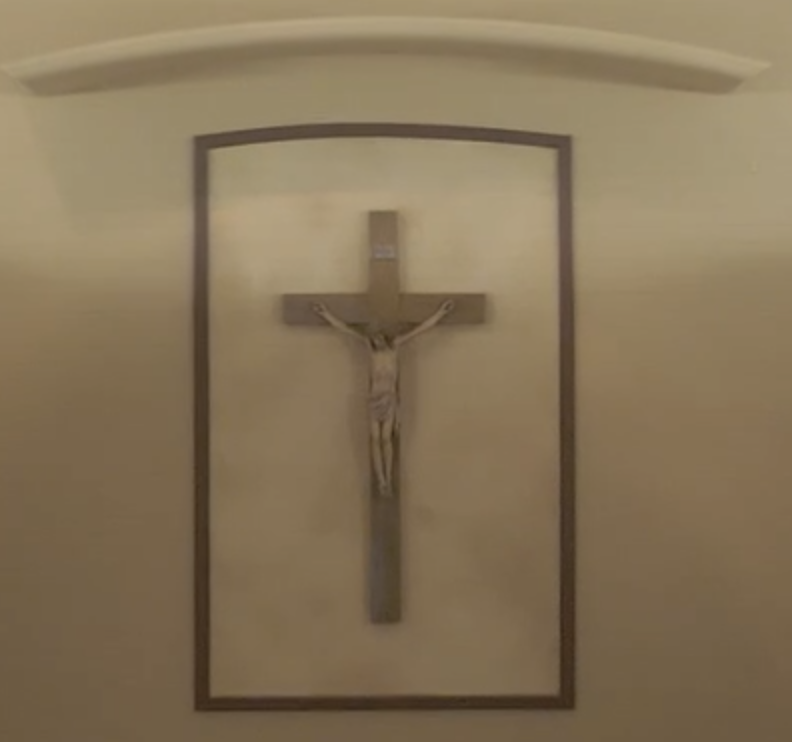
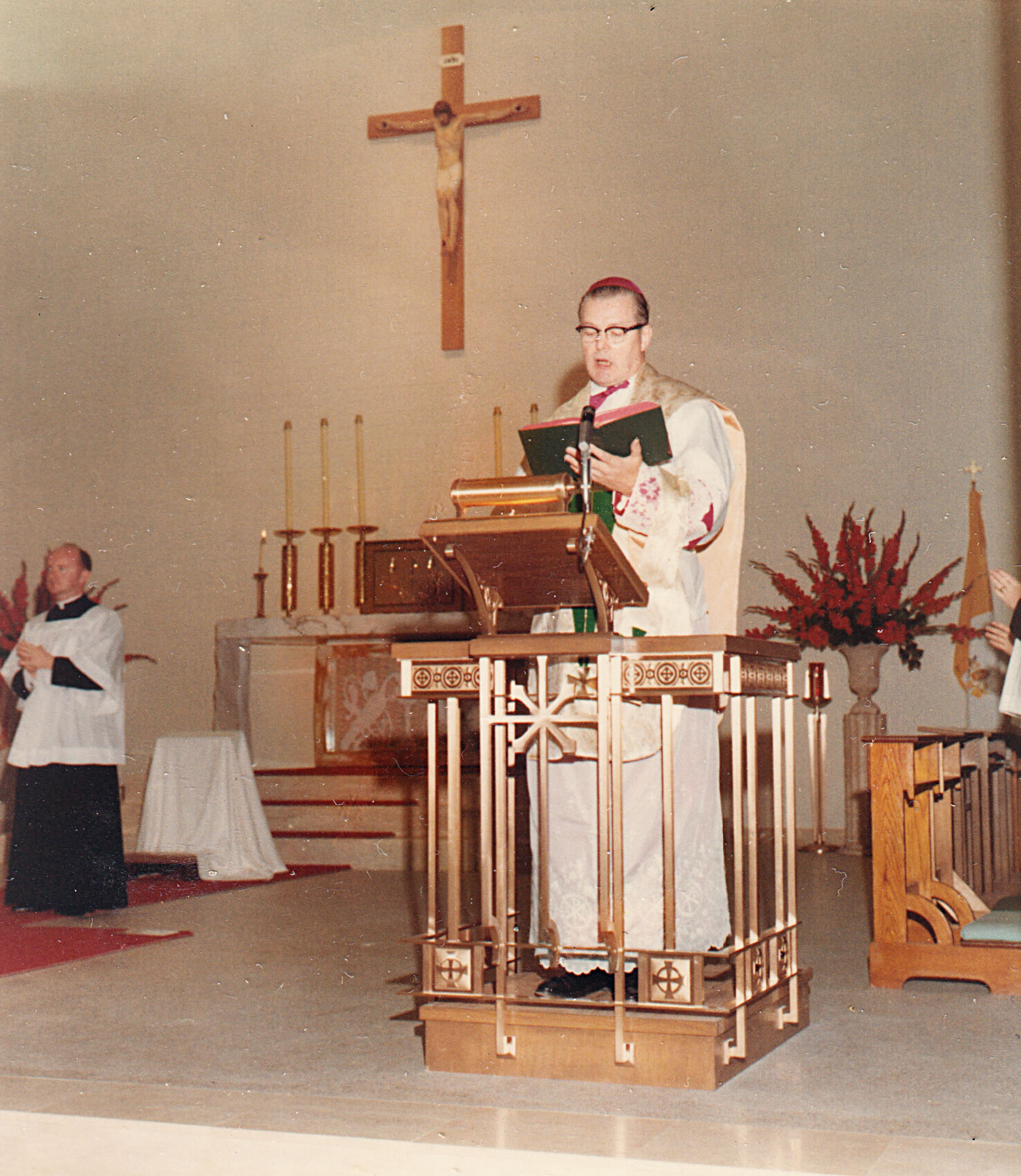
From old photos we have noted that the original crucifix displayed at the dedication of the new church on February 13, 1966 with Bishop Furey celebrating, was different than our current crucifix. Note the arms of Jesus stretched straight out along the cross beam, compared to our present crucifix with army at an angle. Our current crucifix had not arrived yet so a place holder was used for a short time. Note cross proportions are different as well.
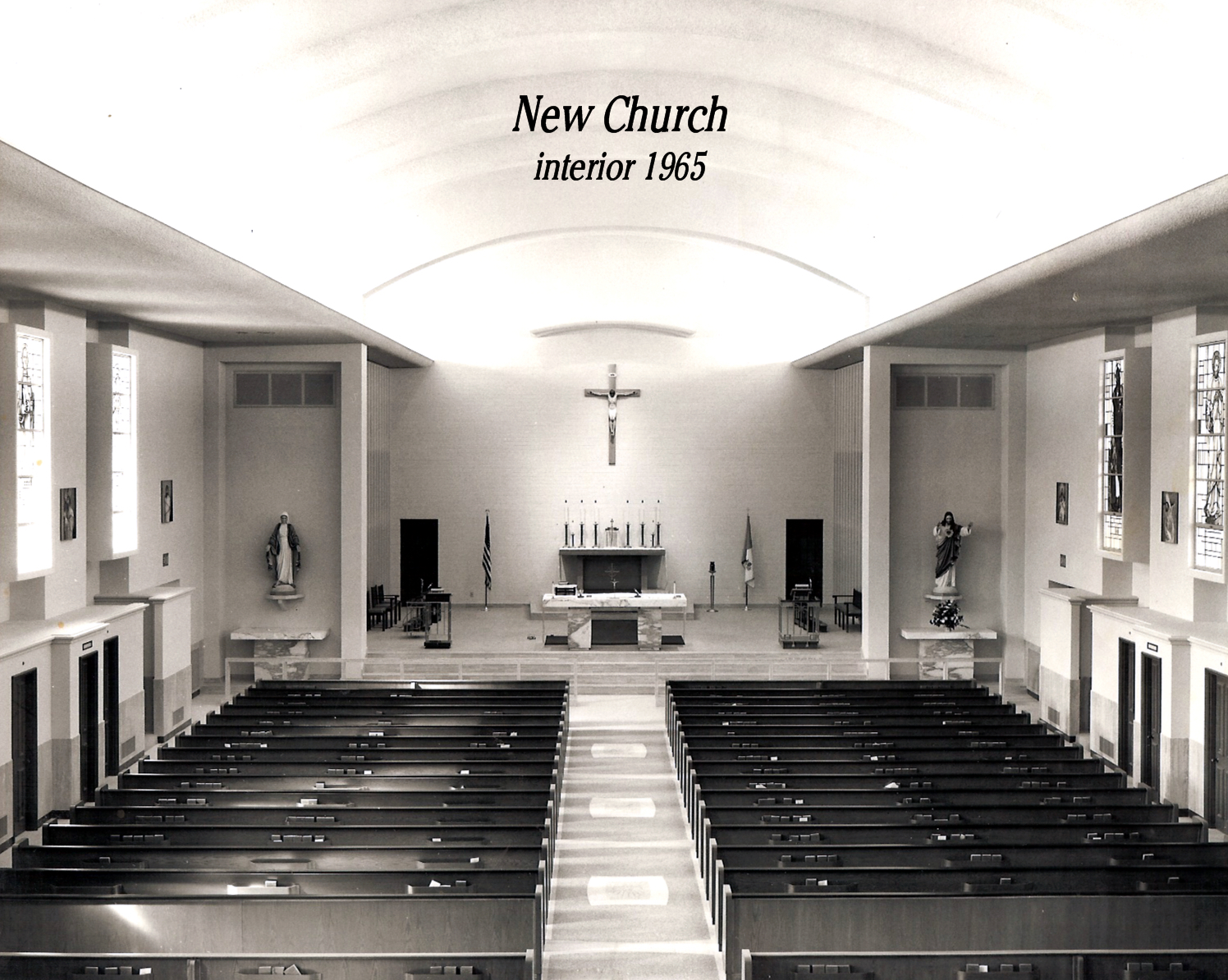
Also note the statues of Mary and Jesus on either side. They are not resting on the altars as they are now, but elevated about 2 foot higher on a shelf. We have found the old platforms and best guess is statues were lowered to altar top to be more stable in case of earthquake. And while statue placement as far as sides, they show here as they are now. However some parishioners recall sides were swapped at some point for awhile.
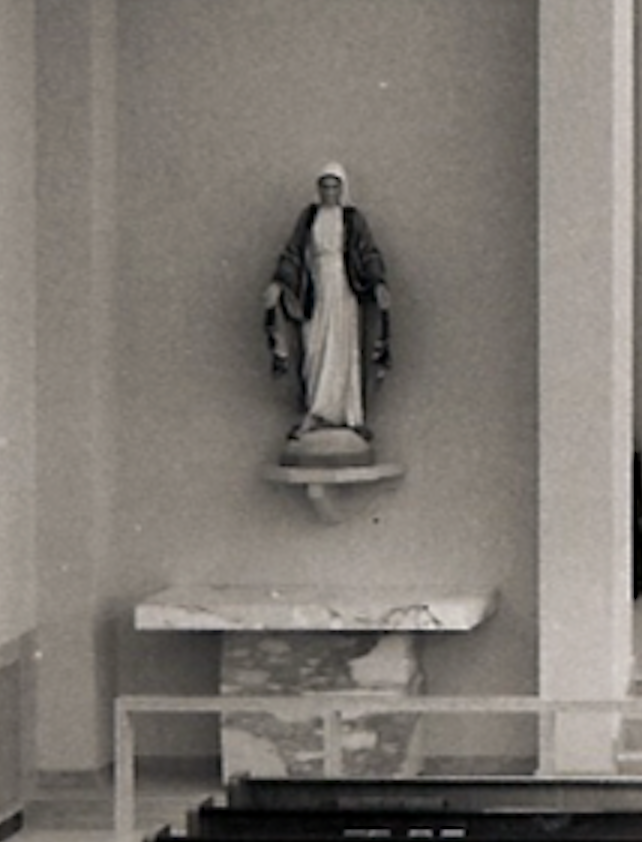
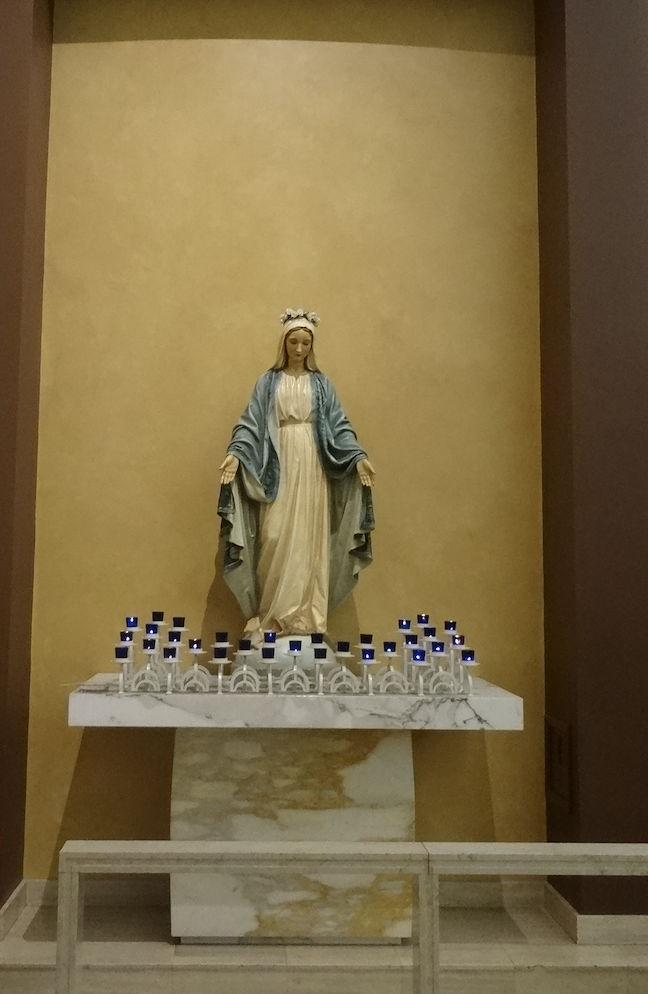
And if you look closely at the 1965 interior photo you will see a communion rail going all the way across, which was pretty standard in the early ’60s, but after Vatican II, many railings were removed. Ours were partly removed and just the parts in front of the two statues now are left for kneeling.
The original, renovated church building remains in use and is now known as Barry Hall. The current rectory with parish offices and conference room was completed in 1975.
In 2012 there was a major restoration of Barry Hall as the roof leaked, and there was some foundation issues that needed to be addressed. At a cost of $105,000
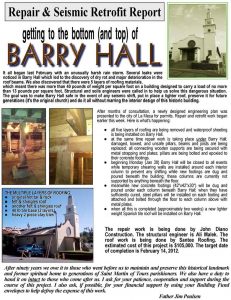 The interior was also restored although not at this same time to expose the original beams, install new lighting and acoustic panels.
The interior was also restored although not at this same time to expose the original beams, install new lighting and acoustic panels.
There has been no recent major construction on the grounds since then but plans are in the works for a multipurpose building to be built where the preschool is now located. It is not clear when construction will begin.
If you have any further information on any of this, please contact David at webmaster@stmartinoftoursparish.org
